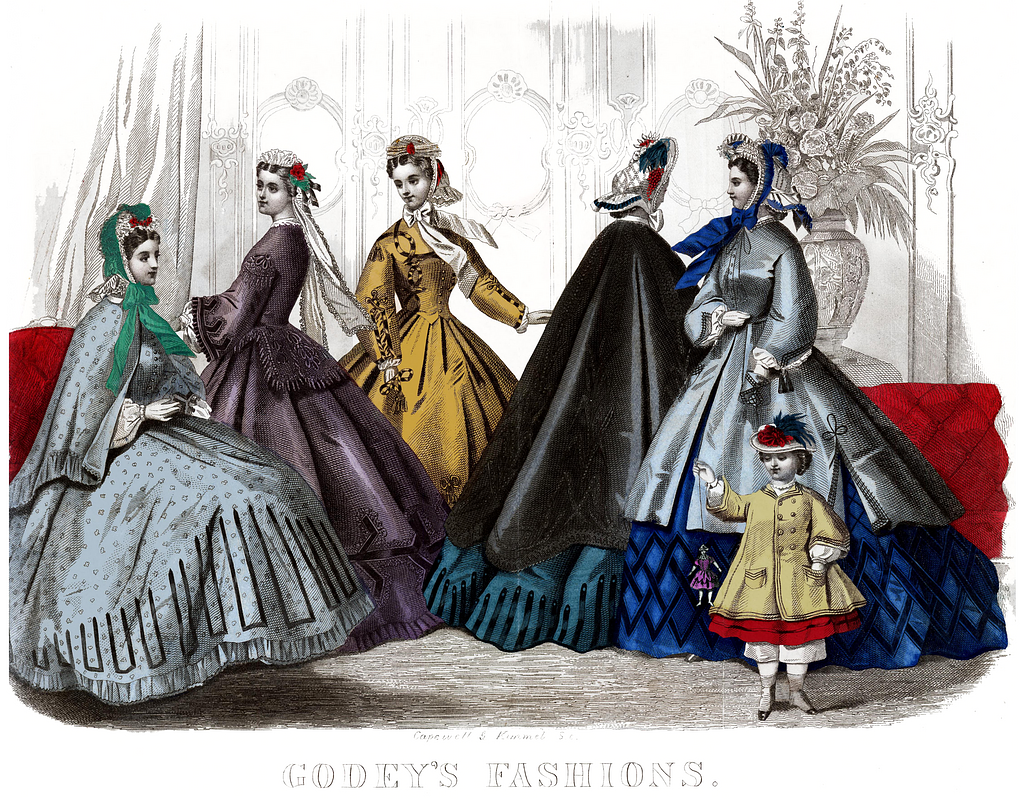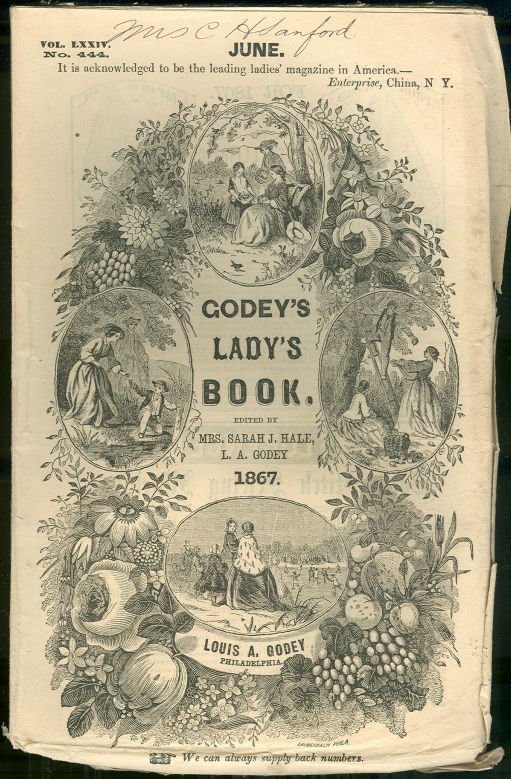How Philadelphia is Redefining Itself as a Fashion City
Part 1: Philly’s Fashion History
By Brittany Furber
When one thinks of Philadelphia, a few things commonly come to mind: the Liberty Bell, Philly Cheesesteaks, Rocky, the Eagles, the Phillies, the 76ers, Love Park, and numerous historic landmarks. However, as time progresses, another facet of Philadelphia is growing steadily. The fashion scene of Philly is building momentum thanks to a group of devoted local industry professionals. How long has Philadelphia been a part of the fashion sphere? Who are some of the industry’s key players? How is it progressing now? What challenges does the local industry face along the way? We will explore these questions and more as we delve into the growth potential of Philadelphia's fashion industry.
In part one of the “Philadelphia Fashion Industry Growth Potential Series,” we will delve into the city’s history in this arena. Part two will start with an introduction to professionals from Philadelphia’s fashion industry today and go into their perspectives on various topics. They will assess the growth of the city’s fashion scene, the dilemmas it faces, its growth potential, and more.
Philadelphia’s fashion roots begin at least as early as slightly before the eighteenth century, as detailed in Clare Sauro’s essay entitled “Fashion.” Sauro also notes that the city’s fashion history revolves around garment and accessory production and sales. According to Sauro, eighteenth-century fashions were often influenced by the European market, either in the form of adapted versions produced locally or those imported from Europe. Wendy Woloson explains in an online version of the “Fashioning Philadelphia” exhibition, on the page titled “Fashion Revolutions,” that there was a push for domestically produced fashions starting in the 1760s because American products represented independence from England. Sauro states in the essay “Fashion” that “In the years just before and during the American War of Independence…Philadelphia artisans flourished during this period of non-importation, but Atlantic trade soon resumed.”
Woloson notes that styles spurred by Ben Franklin and the Quakers favored effortlessness, which opposed excess ornamentation, within the pages entitled “Benjamin Franklin: Philadelphia’s First Fashionista” and “Philadelphia Street Style” of the Fashioning Philadelphia. However, on the latter page, Woloson explains that ready-to-wear garments led to a shift away from these stylistic tendencies because as a broader population could participate in fashion, these styles began to feel out-of-date, “…by the second quarter of the 19th century…”. Sauro notes that during the 20th century, there was a continuation of the European-influenced style preference.
Continuing, in the description for the exhibit by The Library Company of Philadelphia, Woloson emphasizes the importance of the garment and accessory construction in the city’s history. Woloson continues noting that due to the degree of significance garment and accessory production played in Philadelphia, especially in the 19th century, it was once referred to as “…the ‘“Workshop of the World.”’” Woloson also explains that the area was responsible for creating individual components that went into the design of these items, according to the same source. The Robert & Penny Fox Historic Costume Collection editors detail on the page for its “Philadelphia in Style” exhibition on Google Arts & Culture that during the 20th century, there were three locations, Walnut, Market, and Chestnut Street, which housed fashion and accessory related production and retail businesses. Sauro provides further insights on this topic and states, “In the early years of the republic, Philadelphia’s Chestnut Street became recognized as one of the most fashionable streets in the world.”
Chestnut Street , Philadelphia, PA
Source: Detroit Publishing Company/Library of Congress
On the retail side of things, according to Sauro, businesses selling finished pieces or individual components of garment manufacturing began to become plentiful in the middle of the nineteenth century. Sauro continues by adding that further into this century, these companies, including John Wanamaker & Co. and Strawbridge & Clothier, would eventually evolve into department stores. The Robert & Penny Fox Historic Costume Collection editors explain that these types of stores were on Market Street, while the streets Walnut and Chestnut offered “…custom-made…” items due to the prevalence of tailors, hat designers, and dressmakers in the area. The “Philadelphia in Style” exhibition on Google Arts & Culture states, “The best known of these department stores was John Wanamaker’s, which served as a national model for their innovative approach to market, novelty, and high style.”
In addition to production and retail, fashion also came into play with one of the city’s well-known publications Godey’s Lady’s Book, as Beverly C. Tomek details in an essay of the same time. Tomek notes that the publication featured fashion content, in the form of tips, drawings, and sewing patterns, in addition to other topics and writing formats of interest and was first released in 1830. Fashion imagery was also distributed through Graham’s Magazine, another Philadelphia publication, as detailed in “The Online Books Page (Archive Listings for Graham’s Magazine)” on the University of Pennsylvania website. Sauro explains that local publications allowed Philadelphia to convey a sense of leadership within the American fashion sector.
According to the “Philadelphia in Style” exhibition, through multiple strategies Philadelphia’s department stores managed to sustain and expand the reach of their businesses from the 1950s to late 1960s and adjust their product offerings to the given zeitgeist. “Philadelphia in Style” also explains that more boutiques arose as well. However, by the late 1960s into the latter half of the 1970s, businesses were struggling considerably and conditions would grow more concerning in the subsequent two decades, as detailed in the same source. Sauro notes that one major disruptor to Philadelphia’s status in fashion was that New York City became “…the gateway of the United States…” due to the presence of the Erie Canal, allowing it exponentially grow trade. Later on, Sauro concludes that the city also lost its hold on manufacturing, which started to relocate.
Looking toward current times, we see a Renaissance phase for Philadelphia’s fashion industry. The revitalization of the fashion sector within the city is due to the efforts of numerous fashion professionals. Kevin Parker and Kerry Scott, cofounders of Philly Fashion Week, have led the movement to bring Philadelphia back into the fashion scene. Philadelphia Fashion Incubator and the Philadelphia Fashion and Garment Industry Task Force have helped provide designers with the resources necessary for success. Elissa Bloom is one individual involved in both endeavors. Talented designers, including Kimberly McGlonn of Grant Blvd, Prajjé Oscar Jean-Baptiste of Prajjé Oscar, and Michelle Fite of Fite Fashion, with fresh ideas and a devotion to quality, have also contributed to the rebirth of the city’s fashion industry.
Part two will introduce these individuals and bring about an important dialogue regarding Philadelphia’s fashion industry. The city has previously been a thriving center for fashion and is now seeing a return to being a key presence in the field. Stay tuned for the continuation of this series, which will delve into the current state of the city’s fashion industry and its potential for the future.
Sources:
Robert & Penny Fox Historic Costume Collection Editors. “Philadelphia in Style.” Google Arts & Culture(March 2016). Retrieved March 21st, 2023, from https://artsandculture.google.com/story/philadelphia-in-style-the-robert-and-penny-fox-historic-costume-collection-at-drexel-university/VwXxtiVLvSYgKw?hl=en.
Sauro, Clare. “Fashion.” The Encyclopedia of Greater Philadelphia (2017). Retrieved March 19th, 2023, from https://philadelphiaencyclopedia.org/essays/fashion/.
Tomek, Beverly C. “Godey’s Lady’s Book.” The Encyclopedia of Greater Philadelphia (2015). Retrieved March 25th, 2023, from https://philadelphiaencyclopedia.org/essays/godeys-ladys-book/.
University of Pennsylvania Editors. “The Online Books Page (Archive Listings for Graham’s Magazine).” University of Pennsylvania (n.d.). Retrieved March 25th, 2023, from https://onlinebooks.library.upenn.edu/webbin/serial?id=grahamsmag.
Woloson Wendy. “Fashioning Philadelphia: Benjamin Franklin: Philadelphia’s First Fashionista.” The Library Company of Philadelphia (n.d). Retrieved March 23rd, 2023, from https://librarycompany.org/fashioning/section1.html#gsc.tab=0
Woloson, Wendy. “Fashioning Philadelphia: Fashion Revolutions.” The Library Company of Philadelphia (n.d). Retrieved March 23rd, 2023, from https://librarycompany.org/fashioning/section2.html#gsc.tab=0.
Woloson Wendy. “Fashioning Philadelphia: Philadelphia Street Style.”The Library Company of Philadelphia (n.d). Retrieved March 23rd, 2023, from https://librarycompany.org/fashioning/section3.html#gsc.tab=0
Woloson, Wendy. “July 20, 2015 – March 4, 2016 (Fashioning Philadelphia Exhibition Listing/Description).”The Library Company of Philadelphia (July 2015). Retrieved March 23rd, 2023, from https://librarycompany.org/portfolio-item/2016-02-fashioning-philadelphia-the-style-of-the-city-1720-1940/.










